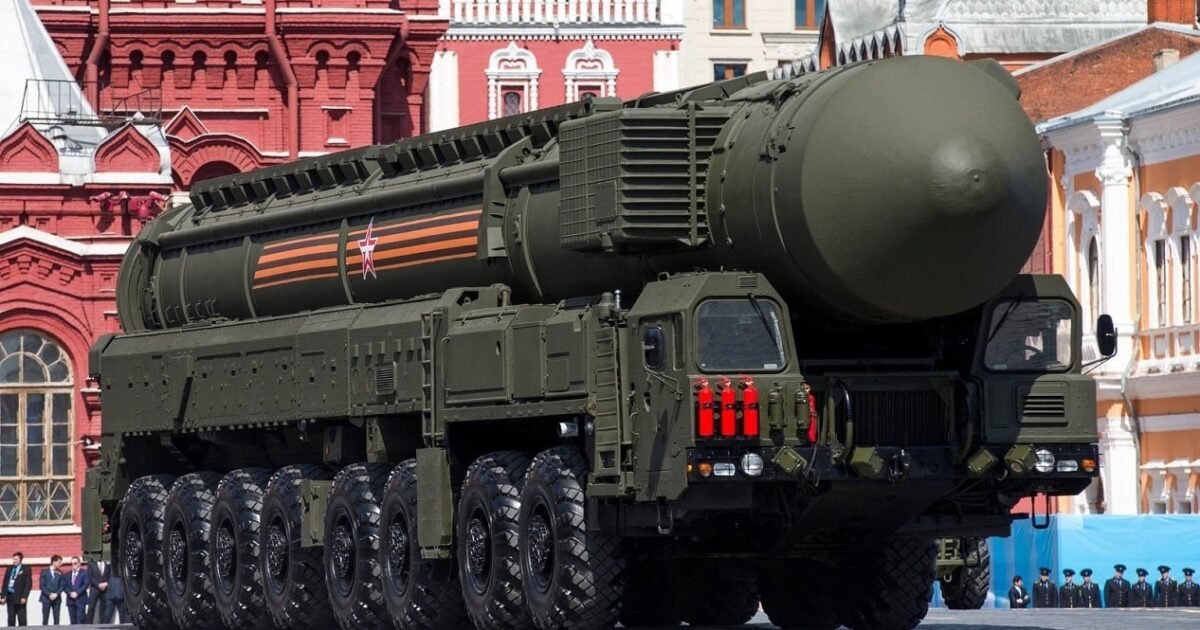Russia’s Nuclear Weapons. A Russian Mobile ICBM. Image Credit: Creative Commons.
On August 1, 2025, President Donald Trump announced he had ordered two U.S. nuclear submarines to be deployed to “appropriate regions” in response to provocative remarks by former Russian President Dmitry Medvedev. Medvedev had warned Trump to “remember” Russia’s Soviet-era nuclear capabilities after Trump issued a 10-day ultimatum for a ceasefire in Ukraine or face tariffs. Trump described the move as precautionary, warning that “words can lead to unintended consequences.”
While analysts generally view the submarine deployment as symbolic rather than a direct step toward nuclear confrontation, it is unclear how Russian President Vladimir Putin will interpret the gesture. In light of these developments, comparing the nuclear postures of the United States and Russia is essential to understanding the current strategic balance and its potential implications.
Russia possesses the world’s largest nuclear arsenal, with an estimated 5,580 total warheads. Of these, 1,710 are deployed, 2,670 are in storage, and around 1,200 are retired, giving Russia approximately 4,380 warheads available for operational use. In comparison, the United States maintains about 5,044 nuclear weapons. According to the most recent New START declaration, 1,419 strategic nuclear warheads are deployed on 662 strategic delivery systems. Relevant to a potential conflict with Russia, the United States maintains approximately 150 theater nuclear weapons stationed in Europe.
Together, the United States and Russia control roughly 90 percent of the world’s nuclear weapons, but their doctrines reflect vastly different thresholds for use. The 2022 U.S. Nuclear Posture Review (NPR) reaffirms that the fundamental role of U.S. nuclear weapons is to deter nuclear attacks against the United States, its allies, and partners.
Despite campaign promises to adopt a “sole purpose” policy, that nuclear weapons would only be used to deter nuclear attacks, the Biden administration ultimately rejected both “No First Use” and “Sole Purpose” doctrines. After a comprehensive review, the NPR concluded that such commitments would impose an “unacceptable level of risk,” given the potential for non-nuclear threats to cause strategic-level damage.
Instead, the United States maintains a policy of calculated strategic ambiguity. It reserves the right to employ nuclear weapons under “extreme circumstances” when the vital interests of the U.S. or its allies and partners are at stake. These circumstances could include not only nuclear attacks but also significant non-nuclear strategic attacks, such as those on civilian populations, infrastructure, or U.S. command and control systems. The posture is designed to complicate an adversary’s decision-making by creating uncertainty over how the U.S. might respond to various forms of aggression.
This doctrine explicitly extends to U.S. allies, reinforcing the nuclear umbrella that deters attacks on NATO members and other strategic partners.
Russia’s November 2024 nuclear doctrine significantly lowers the threshold for nuclear weapons use compared to the 2020 policy. The previous doctrine allowed nuclear retaliation only if Russia faced a threat to “the very existence of the state.”
The updated policy now permits nuclear use in response to conventional aggression that poses a “critical threat” to the sovereignty or territorial integrity of Russia or Belarus. It also specifies additional scenarios, including a ballistic missile launch against Russia or its allies, and the “massive launch” of aerospace attack systems, such as cruise missiles, hypersonic weapons, or drones, crossing into Russian airspace.
Notably, aggression by a non-nuclear state is considered a joint nuclear threat if it occurs “with the participation or support” of a nuclear-armed power, a clause aimed squarely at NATO’s military support for Ukraine.
The 2022 U.S. Nuclear Posture Review acknowledges a new strategic era in which the United States must contend with two major nuclear-armed competitors: Russia and China. In response, the U.S. maintains a high threshold for nuclear use, grounded in deterrence, while Russia’s evolving doctrine increasingly treats nuclear weapons as instruments of coercion and warfighting.
Russia will likely interpret the deployment of two U.S. nuclear submarines as a serious escalation in nuclear signaling. Under its revised 2024 doctrine, which lowered the threshold for nuclear use, Moscow may view such actions as crossing red lines tied to its territorial sovereignty. The release of the updated doctrine appears to be part of a coordinated effort to deter attacks on Russian territory, particularly those carried out with weapons supplied to Ukraine by the United States and other NATO countries.
The post Comparing U.S. and Russian Nuclear Postures as U.S. Submarines Approach Russia appeared first on The Gateway Pundit.











